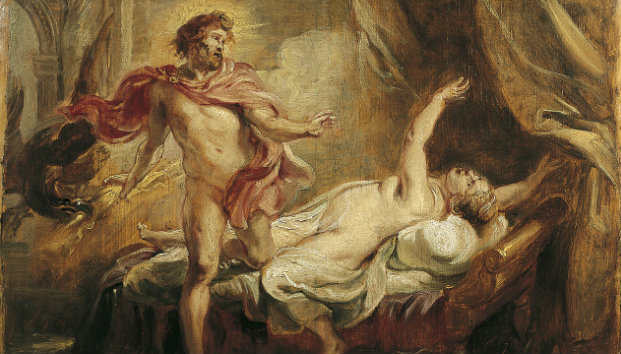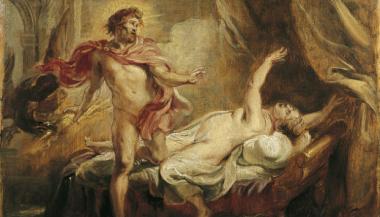
Thanks to the Early Music movement, French Baroque style is much more accessible to modern audiences than it was 50 years ago. French 18th-century opera, however, is still rarely performed. The American Bach Soloists’ upcoming presentation of Marin Marais’ 1709 Sémélé, a full-length tragédie en musique, therefore becomes an extraordinary opportunity for local audiences. This opera-in-concert, August 13 and 14 at the San Francisco Conservatory of Music, serves as the centerpiece of ABS’ “Versailles and the Parisian Baroque” festival in August.
If the name “Marin Marais” rings a bell, it’s probably thanks to Tous les matins du monde (“All the mornings of the world”), Alain Corneau’s 1992 movie about the young viol prodigy’s complicated relationship with his stern teacher Sainte-Colombe and that teacher’s fetching daughter. The film’s soundtrack contains bewitching performances by Jordi Savall of Marais’ superb viol music, the compositions for which he remains best known today. Only specialists and enthusiasts realize that he also composed several, surviving large-scale works, including four operas — among them his final stage work, Sémélé.
If you’re familiar with Handel’s Italian operas, you know that Italian opera was designed to display the virtuosity of the star singers and set-piece arias are the main attraction. French operas from this same period are profoundly different.
French opera was established in the late 17th Century for the court, and in consultation with King Louis XIV, by Jean-Baptiste Lully, who, with his indispensable librettist Philippe Quinault, established its prescribed form: a lyric tragedy in five acts preceded by a prologue. The dramatic action is regularly interrupted by divertissements, extended “entertainments” often pastoral in nature. Unlike in opera seria, the music may move rather seamlessly from graceful recitative to aria to duet and back to recitative. Arias, even those in the da capo (ABA) form, are rarely occasions for bravura. The chorus usually plays an important role, unlike in Italian opera, and there are extensive suites of dances — but no castrati, Italian opera’s star soloists, were allowed. Italian opera was designed to display the virtuosity of the star singers and set-piece arias are the main attraction. French operas from this same period are profoundly different.
Sumptuous orchestral writing is de rigeur, made possible by use of the royal musicians and a large budget. Marais’ orchestra for Sémélé features trumpets and percussion, including castanets, which turn up in the magnificent extended chaconne that dominates the second act.
Handel’s 1744 oratorio, staged by the San Francisco Opera in 2000, is the best known musical setting of the story of Semele. Its libretto derives from a 1707 text by the great English playwright of The Way of the World, William Congreve (with music by John Eccles). That work mysteriously remained unperformed until 1964. In both Congreve’s work and Antoine Houdar de la Motte’s libretto for Marais, Semele, the daughter of the King of Thebes, has caught the roving eye of Jupiter. Though betrothed to another, she is swayed by the ardent attentions of a god in human form, causing her to abandon her family and fiancé.
Jupiter’s jealous wife Juno learns of the liaison and schemes to bring down his ambitious mistress. Disguising herself as one of Semele’s confidants, Juno insinuates that the seducer isn’t really Jupiter: Semele should demand that he appear to her as the god himself. When he does, Semele is killed by Jupiter’s lightning bolts but not before the god saves her unborn child — Bacchus, the god of wine and fertility.
Marais and de la Motte give a prominent role to Adraste, the jilted fiancé, and their Semele proves to be a more sympathetic character than Congreve’s high-reaching conniver. However, alone and frightened, Handel’s anti-heroine gets the more moving death. In Marais’ opera, Sémélé and Adraste perish in a spectacular conflagration that echoes the famous storm scene that was the “hit” of Alcyone, the French composer’s previous (and far more successful) opera.
American Bach Soloists’ Artistic and Music Director Jeffrey Thomas, who was once a noted tenor in the French baroque repertoire and who previously conducted Rameau’s one-act Pygmalion for ABS, will lead Sémélé featuring 13 vocal soloists and the ABS Academy Orchestra and Chorus. The performances promise to be essential events for adventurous music-lovers.

